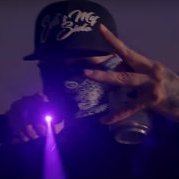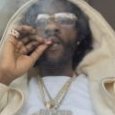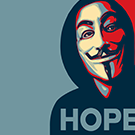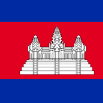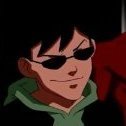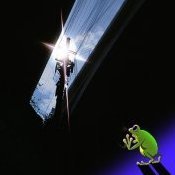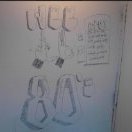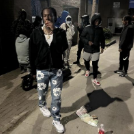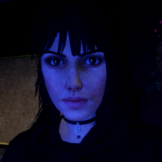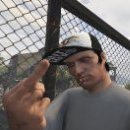Search the Community
Showing results for tags 'vespucci'.
-
Terror Town 13, formerly known as Varrio Terrorside 13, is a criminal street gang operating in the Vespucci area of Los Santos, composed mainly of Mexican-Americans. Originally starting as a tagging group named Beachside Terror under the leadership of Hopout Cueves and Joker Vargas, they ran rampant around the Vespucci area (primarily Melanoma street) whilst leaving their distinctive pieces of art along whichever blank canvas could be found; some of which can still be seen in certain areas, not yet being defaced or removed by city officials. A once somewhat innocent group founded on a shared passion of graffiti and the culture around it would quickly turn into something much more sinister after being forced into a series of territorial conflicts with other criminal groups in their proximity. Being forced to replace their spray cans for pistols, they would stand their ground and harness a reputation as something much more than just a group of friends that loved graffiti. With this newfound reputation, the group was brought under the umbrella of the Mexican Mafia, or La eMe, a powerful criminal organization that controls a vast majority of the sureno street gangs based in Los Santos, facilitating the group’s reformation from Beachside Terror into Varrio Terrorside 13. Unlike the conflicts mentioned prior Varrio Terrorside was entwined into a much more serious conflict with PEN1 or Public Enemy No. 1, a predominately white skinhead gang also based out of the Vespucci area of Los Santos. Following said conflict, Varrio Terrorside would enter a period of inactivity stemming from the deaths and incarcerations of longstanding and leading members of the group, a period of inactivity that they would not recover from until many years later when a new group would appear around Vespucci seemingly mimicking their distinctive styles of graffiti. This group led by Andrew "Nitro" Contreras and Brendan "Chino" Aranda would adopt the namesake of the crew they once grew up watching roam the streets of Vespucci as children, becoming the second generation known as Beachside Terror. The emerging crew, spearheaded by the aforementioned Contreras and Aranda, did not rise to acclaim in Vespucci without struggle and conflict. Feuds with nearby gangs, notably an existing School Yard Crips set and another Naughty Nasty Crips set, quickly taught the group that they'd need to be ruthless in order to thrive in their area. These tensions also birthed the gang's identity as being crip-killer, having lost a number of members at the hands of this reciprocated violence that still leaves a sour taste in mouths to this day. Despite showing a definite capability for violence (consequently skyrocketing the neighborhood's crime rate and keeping rent prices low), the youthful group still lacked the relevant experience and guidance to stake their claim as a force to be reckoned with. One moment in particular catapulted the gang into street notoriety. Amidst brewing tensions with a rival gang, the “Asian Boyz”, CCTV footage captured a number of masked men opening fire on a crowd. This shooting left six alleged ABZ members dead, with another two left severely injured. The footage circulated on social media and various accounts and sources claimed the murders as the work of the growing Terror Town 13 gang, although it was never confirmed by authorities and nobody was ever prosecuted for such. Orchestrated shootings like the one above are regarded as Terror Town 13’s trademark, becoming known as a gang that favors attacking as many people in one instance as possible, believing it’s best to kill numerous birds with one stone. These wide scale murders have left rival gangs, like ABZ, with no choice besides surrendering. Wiping out or forcing other factions to raise the white flag is what has allowed Terror Town 13 to stake their claim as the top gang in Vespucci. Thread credits go out to @XIK, @5teezy, @Tz Up Hoez Down, @Poetic Injustice & @Plottin Terror Town 13 is a fictional Sureño gang that originated from a tagging crew called Beachside Terror. The transition from a tagging crew to a full-fledged gang occurred after two months of development. Our aim is to accurately portray a modern Sureño gang in the west side of Los Santos and provide an enjoyable experience to whoever roleplays with our faction. Permission to post screenshots must be granted by leadership in our Discord server. For any questions on how to join or inquiries about the faction, feel free to PM @XIK / @5teezy / @Tz Up Hoez Down
-
- 981 replies
-
- 63
-

-

-

-
- vespucci
- tiny raskals
-
(and 1 more)
Tagged with:
-
Poseidon's Warriors Motorcycle Club Backpatch CHAPTER 1 - The Beginning Paul Morrison had always loved motorcycles. There was something about the wind in his face, the roar of the engine, and the feeling of freedom that came with riding that he just couldn't get enough of. But he also knew that there were a lot of negative stereotypes associated with bikers, particularly those who belonged to Outlaw Motorcycle Clubs. He wanted to create a group of riders who could enjoy their passion without getting caught up in that kind of drama. And so he founded the Poseidon's Warriors Motorcycle Club. At first, it was just Paul and a few of his closest friends who went out for rides together. But as word spread about their group, more and more people started to join in. They all shared the same love of motorcycles, and the same desire to ride legally and responsibly. They weren't interested in getting involved in any kind of criminal activity or causing trouble in name of the Club. They just wanted to have fun and enjoy the open road. As the club grew, Paul realized that they needed to establish some ground rules to make sure everyone was on the same page. They decided that they would always wear helmets and other protective gear, and obey all traffic laws. They also agreed to help out with charity events and community service projects whenever possible, to show that they were a positive force in the community of Vespucci. Despite their good intentions, the Poseidon's Warriors MC still faced some skepticism from outsiders. Some people assumed that they must be involved in illegal activities, since they were a group of bikers. Others looked down on them for not being "real" bikers, since they didn't adhere to the 1%er outlaw code. But Paul and his friends didn't let that discourage them. They knew that they were doing something positive, and they were proud of the club they had built. Over time, the Poseidon's Warriors MC is planning to become a fixture in the community. Organize charity rides to raise money for local causes, volunteer at food banks and homeless shelters, and even start a program to teach kids about motorcycle safety. They show that you could be a biker and still be a responsible member of society. And for Paul and his friends, there was nothing more satisfying than knowing that they were making a difference in their community, one ride at a time. THE CLUB'S FACES (( Out of Character Information )) Poseidon's Warriors MC is legally based, with the core of the faction being on the legal scene - but not forced to stay there. Each and every member of the MC will have the challenge of fighting between the legal and illegal scene, considering the ground rules the Club sets for its members to keep a clean face - and trying to keep out of their name the stereotype of an outlaw MC. It's a unique project, based on a fictional MC and inspired by real life MCs who are operating all around the world without rocking the 1%er patch. To join the Club you will need to figure out their hang around spot and all recruitment is In Character. There are various ways to approach the MC through our planned events or the venues we're planning to open to work as RP Hubs between the MC and the players. We are a happy environment and we accept all roleplayers who are willing to learn and evolve their characters without RPing the typical "veteran outlaw biker" who is already initiated into the MC world, but develop through our faction, whether this ends up being an illegal or a legal outcome.
- 322 replies
-
- 28
-

-

-
Selling a newly renovated standalone property in Vespucci. 3336 Magellan Avenue, 2 bedrooms and 2 bathrooms. Starting Bid: $140,000 Buyout: $275,000 Interior: Imgur: The magic of the Internet ((Pinfo: Imgur: The magic of the Internet))
- 4 replies
-
- vespucci
- standalone
-
(and 1 more)
Tagged with:
-
https://face.gta.world/Nevawantedfame Genesis Warrick was born and raised in the West Los Santos; La Cienega Canals in Vespucci to be exact, he moved around the canals all his life with his mother so he's a familiar face to locals and gang members. Genesis currently resides in an apartment building with his mother on Palomino Avenue. Genesis lost his father to the prison system at a young age over a drunk car chase which led to him killing two innocent people, his father been in prison since he was only six years old so Genesis grew up looking up to the older gang members around the area. After following his unlawful guardians around La Cienega he has learned his own way to make money illegal regarding narcotics, mostly marijuana. Hence him learning so fast off drug-selling and being good at math, he's put some of his local friends on to the game with him to make their own type of money which worked out fortunately. Genesis is a known drug dealer around the neighborhood. He took his knowledge from Jattori "Hardhead" Rivers & Pedro "Baby Lethal" Luevano and shifted it off to his peers he's close with. Now he's mostly passing off packs to other locals around the neighborhood and making his own income without doing all the dirty work himself. With him selling at a young age; marijuana mostly, he's been giving others huge batches based off fronts or pay-ups off rip. He's usually advertising narcotics on Facebrowser to boost his clientele. Genesis is a huge internet freak, he's seen on Facebrowser through-out the day advertising his products to sell or taunting his enemies, he's quick to call somebody "federal" or "police" if it gets to serious based on the situation, he learned that from older residents he used to follow around. • Genesis was put on to Playboy Gangster Crip at the age of 16, he wasn't the false claiming type before he was vouched from RJ "Tray Stone 2" Murrell personally. He was initiated by Andreaus Randle a/k/a Big G Star, Kenneth Gainer a/k/a Tiny Sleep, & Pedro Luevano a/k/a Baby Lethal. [UPDATED] Genesis currently resides with his Uncle on Imagination on the 2000 with his uncle, his mother kicked him out after he repeatedly started getting arrested for firearms. He still loiters around 1900 most of the time though. Genesis was put on at 16 under the name Lil Kill Shot. This was because he was front lining the School Yard Crip war with the older generation, he was later pronounced as Big Kill Shot by Kenneth Gainer a/k/a Tiny Sleep after the previous Big KS got put off. A few weeks go by & he was brought under Tyquan "Big Tray Stone" Belton & was named "Baby Tray Stone" Genesis is still one of the neighborhood's weed dealer, with Kelvin "Lil Threezy" Machado & Troy "G-Flame" Laguerra moving to hard drugs & Jaimeson "P-Gotti" Polk taking rap seriously he'd stay to what he knew best which was marijuana. With him being very known for drug dealing around the neighborhood he tries his best to help out younger residents who wants to make quick & fast money. It's no secret to the streets that Genesis is a weed seller off him basically advertising his amount of exotic bags on social media. Isn't a stranger to the system whatsoever. Genesis was documented as a gang member right after he turned 17 when he recieved a huge face tattoo of a "P", most of his charges conclude in drugs or firearm charges, he's currently a felon as well. Genesis was released in March for fighting an Attempted Murder Charge with Drug Trafficking, both charges ended up getting dropped for lack of evidence but he still sat for being a felon with a firearm which he had to serve for a lengthy amount of time. One of those who takes gang politics and everything that comes with it very serious. He's always lacing up (teaching) those who want to be from the gang, putting them through tests and keeping them active. He's not the one you wanna slip up on your gang banging around. You will be put on blast more than likely and will be at risk of a DP or even worse in a matter of time. Genesis has been a participant in various shootings reported to be known by affiliated members of PBGC & survived them all; only getting shot in his leg once. Genesis is part of Jaimeson "P-Gotti" Polk's entourage, he's basically one of his biggest fans since he grew up with him being with him when he first started in Genesis' mother's apartment. He's been by his side ever since.
- 101 replies
-
- 13
-

-
This will follow Wade Zettergren's story as he follows the path of many drug addicts.
-
- 19 replies
-
- 7
-

-

-

-
- korean-american
- drugs
-
(and 9 more)
Tagged with:
-
This thread will follow the life of Melissa Rizzo, a vespucci girl involved in the local white pride scene. "They're interested in women because they see them as less likely to attract police attention and less likely to be police informers. Some of the leaders tell me if you recruit women, you get their kids and husbands, too." She says it wasn't really about racism for her, at least not in the beginning. "It was a displacement of my feelings. Like, Me being this way can't be my fault so it must be someone else's fault. The skinheads gave me a place where I could focus the rage and anger I was experiencing, there was a lack of connectedness in my family growing up, but the skinheads gave me a sense of unconditional belonging."
-
Magellan Organized Crime Group The Magellan Organized Crime Group is a clandestine criminal syndicate that has established a vice-like grip on the underground economy of Los Santos. Operating in the shadows, the organization is renowned for its proficiency in various illegal activities, including underground banking, clean-up crews, and drug trafficking. Notoriously elusive, the true identity of the organization's enigmatic leader remains shrouded in mystery. Foundation and Expansion Magellan's roots can be traced back to the turbulent days of the Martorano Crime Family. The organization's enigmatic leader, referred to as "The Spider," is rumored to be the nephew of a powerful Martorano underboss. Surviving multiple brutal wars during the height of the Martoranos, The Spider emerged unscathed and founded the Magellan Organized Crime Group. Since its inception, the group has diversified its operations, with a stronghold in the legal world of Los Santos. Inferno Investment Group and Nightlife Monopoly Magellan's financial prowess is exemplified through its creation of the Inferno Investment Group. Specializing in investments primarily within the nightlife industry, Inferno has monopolized a myriad of nightclubs and bars that serve as money laundering fronts for the organization. The crown jewel of this empire is the Versuz Nightclub, nestled in Vespucci, which also houses the company's headquarters. Inferno Entertainment Group, a subsidiary of Inferno Investment Group, operates and manages the nightclubs. Boasting a vast network of DJs and a high-profile clientele, the entertainment arm ensures a constant flow of funds into Magellan's coffers. The Spider: King of Shadows, Architect of Order At the epicenter of the Magellan Organized Crime Group, an enigmatic figure, known only as "The Spider," orchestrated the intricate dance of power and influence that defined the organization's existence. A master strategist and architect of order, The Spider was the undisputed Maestro of Shadows, ensuring the organization ran like a well-oiled machine even as he maintained a vice-like grip on its direction. Masterful Stratagem and Architect of Order The Spider's strategic brilliance formed the bedrock upon which Magellan thrived. Operating with a foresight reminiscent of a grand chess master, he orchestrated every move to safeguard the organization's interests and expand its reach. The Boss's ability to think several steps ahead in the ever-evolving game of organized crime in Los Santos established him as a formidable force within the city's shadows. His role as the Architect of Order extended beyond the realm of street-level enforcement. The Boss formulated overarching strategies that seamlessly blended criminal endeavors with the legitimate enterprises managed under the Inferno Investment Group. This dual-pronged approach allowed Magellan to cloak its illicit activities in the guise of legitimate business operations, creating a complex web that confounded law enforcement and rival organizations. Focused Leadership and the Inferno Empire While Magellan's underbelly thrived in the shadows, The Spider strategically focused his attention on Inferno Investment Group and its myriad legal ventures. As the CEO of Inferno, he oversaw a sprawling empire that monopolized the nightlife industry, infiltrating the city's legitimate economy with establishments that served as both fronts for money laundering and thriving entertainment hubs. The Spider's involvement in legal ventures went beyond mere financial gains. He leveraged Inferno to establish influential connections within the city's elite, cultivating relationships that provided the organization with additional layers of protection. The integration of criminal and legitimate enterprises under The Spider's astute leadership solidified Magellan's status as a force that operated on multiple fronts with unparalleled finesse. Maintaining an Iron Fist Despite his focus on legitimate endeavors, The Spider maintained an iron fist within the organization. His directives were clear, and disobedience was met with swift and severe consequences. The Spider's enigmatic presence instilled a sense of both awe and fear among Magellan's members, ensuring unwavering loyalty and a commitment to the organization's cause. The Spider's methodical approach to leadership was not marked by ostentation; instead, it reflected a quiet authority that permeated every decision made within Magellan. His directives, conveyed through trusted intermediaries like The Scorpion and The Lawyer, were executed with precision, leaving no room for deviation from the organization's overarching vision. The Spider's Legacy As The Spider continued to steer the Magellan ship through the turbulent waters of organized crime, his legacy grew in stature. The organization's resilience, adaptability, and continued dominance in the criminal underworld became a testament to The Spider's masterful leadership. His dual role as the architect of order and the head of a legitimate empire created a dynamic that set Magellan apart from its rivals. The The Spider's vision ensured that Magellan remained a maestro orchestrating a symphony of operations, seamlessly blending the clandestine with the legitimate. The organization, under his enigmatic leadership, stood as an indomitable force that thrived in the shadows of Los Santos, leaving an enduring mark on the city's complex tapestry of crime and power. The Scorpion: Enforcer of Order, Sentinel of Shadows In the intricate hierarchy of the Magellan Organized Crime Group, the role of enforcing discipline and maintaining control over the sprawling labyrinth of operations fell to a figure known only as "The Scorpion." Second in command and a ruthless enforcer, The Scorpion's nickname echoed his methodical and lethal approach to keeping the streets of Los Santos firmly under the grip of Magellan's influence. Ruthless Enforcement and Street Control The Scorpion was an enigma, a shadowy figure whose presence on the streets struck fear into the hearts of both subordinates and rivals. His reputation for brutality was legendary, earning him the nickname that perfectly captured his style – swift, deadly, and unrelenting. The Scorpion's primary responsibility was to ensure that Magellan's orders were executed without question, and that the organization's interests remained untarnished on the streets. Operating as the right hand to the elusive boss, The Scorpion meticulously orchestrated the intricate dance of criminal operations. He enforced discipline within the organization's ranks, swiftly dealing with any dissent or betrayal. The Scorpion's ruthlessness was not limited to internal matters; he extended his control over the various crews that operated under Magellan, ensuring their loyalty through fear and unwavering obedience. Daily Operations and Collaboration with The Lawyer The Scorpion's domain extended beyond the streets; he worked in close collaboration with The Lawyer on a daily basis. This partnership formed a dynamic duo that blended the ruthless enforcement of street operations with the strategic precision required to navigate legal and legitimate fronts. On one hand, The Scorpion ensured that Magellan's directives were implemented with absolute precision. His ability to command respect and instill fear allowed him to maintain an iron grip on the various crews and lieutenants, making certain that no deviations from the organization's path were tolerated. On the other hand, The Scorpion's collaboration with The Lawyer created a symbiotic relationship that fortified Magellan's position. The Lawyer's legal acumen and The Scorpion's street-level enforcement meshed seamlessly, forming a formidable alliance that allowed Magellan to adapt and thrive in the face of external threats. The Lawyer: Magellan's Strategic Maestro and Chief of Staff Within the clandestine corridors of the Magellan Organized Crime Group, a figure known simply as "The Lawyer" emerged as a linchpin in both the organization's legal affairs and its overarching strategy. With a nickname that conveyed his dual role as a legal advisor and strategic Maestro, The Lawyer seamlessly navigated the treacherous intersection of criminal enterprise and legitimate business, adding a layer of sophistication to Magellan's operations. Legal Acumen and Strategic Brilliance The Lawyer's legal background was impeccable, earning him a reputation as a legal eagle in Los Santos. His expertise extended far beyond the conventional understanding of law, delving into the intricacies of criminal defense, financial regulations, and corporate law. This multifaceted skill set made The Lawyer an invaluable asset to Magellan. As the organization's legal advisor, he meticulously ensured that Magellan operated within the shadows of the law, exploiting loopholes and staying one step ahead of law enforcement. His strategic brilliance, akin to a game of chess played in the dark alleys of Los Santos, allowed Magellan to outmaneuver rivals and anticipate potential threats. The Lawyer's insights were not confined to legal matters; he extended his influence into the organization's broader strategies, contributing to its resilience and adaptability. Chief of Staff for Inferno Investment Group Beyond his legal role, The Lawyer assumed the position of Chief of Staff for the Inferno Investment Group. In this capacity, he functioned as the right-hand man to the CEO, managing the day-to-day affairs of the legitimate front that masked Magellan's criminal empire. His responsibilities encompassed coordinating business operations, handling personnel matters, and ensuring that the Inferno Investment Group served as an impenetrable shield for Magellan's illicit activities. Under The Lawyer's meticulous oversight, the Inferno Investment Group thrived, portraying an image of corporate success and stability. This façade not only provided cover for money laundering operations but also allowed Magellan to extend its influence into legitimate businesses, creating a complex web that blurred the lines between criminal enterprise and lawful operations. Lieutenant "D": The Cleaner, Magellan's Silent Guardian In the intricate hierarchy of the Magellan Organized Crime Group, Lieutenant "D" stood as the silent guardian, leading the enigmatic clean-up crew that operated in the shadows. Nicknamed "D" for his discretion and dedication to swiftly resolving the aftermath of the organization's activities, he emerged as a linchpin in ensuring Magellan's operations left no trace. Specialized in Clean-Up Operations Lieutenant "D" was not a name uttered lightly within the organization; it was spoken in hushed tones, a nod to the specialist who handled the aftermath of Magellan's ventures. His role as the leader of the clean-up crew meant that "D" was tasked with erasing any evidence, tidying up loose ends, and ensuring that the organization's activities remained shrouded in secrecy. The clean-up crew, operating under "D's" command, became an essential element in Magellan's operational strategy. They were the unseen force that intervened before events could spiral out of control, neutralizing potential threats and eradicating traces of the organization's presence on the streets. Swift Intervention and Damage Control "D" operated with a keen understanding of the delicate balance between chaos and order. His primary responsibility was to intervene swiftly, ensuring that any complications arising from Magellan's activities were nipped in the bud. Whether it was a crime scene, a compromised operation, or an unexpected threat, "D" and his crew were on standby, ready to restore order and protect the organization's interests. Lieutenant "Chav": The Drug Trade Maestro, Magellan's Street Sentinel In the intricate hierarchy of the Magellan Organized Crime Group, Lieutenant "Chav" emerged as the linchpin leading a street crew with a singular focus on drug trade and trafficking. Nicknamed "Chav" for his street-savvy approach, he became the orchestrator of Magellan's presence on the streets, weaving a web of narcotics operations that both fueled the organization's coffers and solidified its influence. Drug Trade and Trafficking Maestro Lieutenant "Chav" was a maestro in the realm of narcotics, his street crew specializing in the cultivation, distribution, and trafficking of illicit substances. Magellan's presence on the streets was synonymous with "Chav's" operations, and his nickname became a whispered byword for the organization's dominance in the drug trade. Under "Chav's" leadership, the street crew evolved into a well-organized network that seamlessly moved narcotics through the city's veins. Whether it was smuggling operations, distribution networks, or controlling key points in the drug trade, "Chav" ensured that Magellan's foothold in the lucrative narcotics industry remained unchallenged. Street Presence and Influence "Chav's" crew extended Magellan's influence beyond the shadows and into the very fabric of Los Santos' streets. They operated in plain sight, strategically positioning themselves in key territories to control drug distribution. The streets buzzed with whispers of "Chav's" crew, their reputation for ruthlessness and efficiency preceding them. The crew's presence on the streets served as a constant reminder of Magellan's reach. "Chav" strategically cultivated relationships with street-level operators, ensuring that Magellan's interests were protected at every level. The narcotics trade, under his watchful eye, became a source of both revenue and influence, further solidifying Magellan's status in the city's criminal hierarchy. Coordination with Other Lieutenants "Chav" operated in tandem with other lieutenants, ensuring that the drug trade seamlessly integrated with the broader spectrum of Magellan's operations. His collaboration with Lieutenant "D," the leader of the clean-up crew, was particularly crucial. Together, they orchestrated operations that not only generated substantial revenue for Magellan but also remained discreet and free of complications. In the intricate dance of organized crime, "Chav" became a key player in Magellan's symphony, his operations harmonizing with the clean-up crew's interventions to maintain a delicate balance on the streets. The collaboration between lieutenants ensured that Magellan's presence remained a force to be reckoned with, both in the shadows and on the streets. Lieutenant "Bobby Gatts" The Shadow Operator, Magellan's Logistics Maestro In the intricate web of the Magellan Organized Crime Group, Lieutenant Bobby Gatts carved a niche as the shadow operator, presiding over a trucker depot that served as the nerve center for the organization's logistics. His enigmatic presence and the web of schemes he orchestrated, both legitimate and illegal, added a layer of complexity to Magellan's operations, making him a pivotal figure within the criminal syndicate. The Trucking Maestro Nicknamed Bobby Gatts for his elusive nature and mastery in handling logistics, this lieutenant operated largely in the shadows. The trucker depot under his control served as the hub for managing Magellan's transportation needs, ranging from legitimate contracts with larger companies to facilitating the swift movement of illicit goods. Under "Bobby Gatts's" watchful eye, the trucker depot became a linchpin in Magellan's operations. It not only handled the distribution of narcotics, ensuring a seamless flow across the city, but also played a crucial role in the organization's legitimate contracts, providing a convenient cover for their more clandestine activities. The Oil & Fuel Scams Rumors whispered through the criminal underworld about "Bobby Gatts's" involvement in intricate oil and fuel scams. Allegedly orchestrated at the behest of the Spider, these schemes allowed Magellan to exploit gaps in the market, funneling funds into the organization's coffers while maintaining a facade of legitimacy. The trucker depot served as a strategic asset in these scams, providing a cover for transporting and distributing the pilfered oil and fuel. Bobby Gatts logistical prowess ensured that these operations ran smoothly, evading the prying eyes of law enforcement and rival factions alike. Vehicle-Theft Ring In addition to his involvement in oil and fuel scams, "Bobby Gatts" was rumored to preside over a vehicle-theft ring. Tasked by the Boss to expand Magellan's influence into the lucrative world of stolen vehicles, he orchestrated a network of operatives adept at discreetly acquiring and redistributing high-value automobiles. The trucker depot, with its legitimate facade, played a crucial role in facilitating the movement of stolen vehicles. "Bobby Gatts's" influence extended to forging connections with chop shops and other criminal enterprises involved in the illicit vehicle trade. His ability to seamlessly integrate these operations into Magellan's broader strategy showcased the lieutenant's adaptability and resourcefulness. The Maestro: The Silent Architect of Magellan's Network Amidst the reorganization and resurgence of the Magellan Organized Crime Group, one figure emerged as a key player both within the criminal underworld and the legitimate business front. The Maestro, a shadowy figure with a reputation for discretion and strategic prowess, held a high-ranked position within the Inferno Investment Group, the legal façade of Magellan's empire. However, his influence extended far beyond the boardroom. The Streets' Maestro Known colloquially as "The Maestro," wielded influence on the gritty streets of Los Santos. Operating with a keen understanding of the city's pulse, he orchestrated clandestine dealings, brokered alliances, and ensured that Magellan's interests were not only protected but expanded. His reputation as a methodical and shrewd operator earned him respect and fear among both allies and rivals. The Maestro's role was not limited to enforcing Magellan's will; he was instrumental in setting up new connections and partnerships. His ability to navigate the complex dynamics of the criminal underworld made him a linchpin in the organization's resurgence. Rumors circulated that his skills went beyond mere street smarts — he possessed an uncanny ability to foresee and preempt potential threats to Magellan's operations. Inferno Investment Group's Strategist Within the Inferno Investment Group, the Maestro held a position of influence that went beyond his official title. As a key executive, he played a vital role in managing the financial aspects of Magellan's legitimate businesses. His strategic mind ensured that the organization's funds flowed seamlessly between the legal and illegal realms, creating a complex financial tapestry that confounded investigators and competitors alike. Street Operations Magellan's street operations are divided among various figures, each with a specific focus. "Chav" leads a street crew deeply entrenched in the drug trade, working closely with the clean-up crew to eliminate threats. Operating in the shadows is the mysterious "Gatts," overseeing a trucker depot crucial for transporting illicit funds discreetly. Another notorious crew within Magellan is the Orchardville Avenue crew, a lethal group responsible for eliminating obstacles and ensuring the organization's dominance. Rumors swirl around the crew's involvement in a string of unsolved murders across Los Santos, allegedly orchestrated by the upper echelon of Magellan. Influence in the Legal World Magellan has successfully infiltrated the legal world of Los Santos, establishing connections with judges, lawyers, and corrupt police representatives. These ties enable the organization to manipulate the legal system, ensuring that their illicit operations remain under the radar. Members of Magellan are known figures within the city's rich social elite, walking among the affluent like kings. Legacy and Ongoing Dominance The Magellan Organized Crime Group continues to wield its influence in the dark corners of Los Santos, maintaining a vice-like grip on the city's illicit activities. With its intricate network of operations, formidable leadership, and a web of connections in both the criminal underworld and the legal realm, Magellan stands as an indomitable force, perpetuating a legacy of secrecy, power, and control. Corruption Within the Law Enforcement and Judicial System The tentacles of the Magellan Organized Crime Group reach deep into the heart of the Los Santos law enforcement agencies, where a network of corrupt police representatives ensures the syndicate's operations remain shielded from the prying eyes of justice. This clandestine alliance is a cornerstone of Magellan's longevity, allowing the criminal empire to operate with an almost impenetrable level of impunity. Corrupt Police Representatives Inside the police force, Magellan has carefully cultivated relationships with key individuals, ensuring that the organization is always one step ahead of any potential threat. These corrupt police representatives leak sensitive information about ongoing investigations, planned raids, or impending takedowns to Magellan, allowing the criminal enterprise to reposition its assets and cover its tracks before law enforcement can strike. One notable figure within this web of corruption is a high-ranking officer with the code name "Blackshield." Known for his discreet dealings and ability to manipulate internal affairs, Blackshield has become an invaluable asset to Magellan. His position grants him access to classified information, which he readily shares with the organization in exchange for substantial financial incentives and promises of protection. Insider Information on Raids and Takedowns Magellan's alliance with corrupt police representatives ensures that they are well-informed about any imminent law enforcement actions. Through a series of covert channels, information about planned raids or takedowns is discreetly communicated to the organization. This forewarning allows Magellan to disperse its assets, relocate illicit goods, and fortify key locations, leaving law enforcement empty-handed and frustrated. Connections with Judges and Top Lawyers The organization's influence extends beyond the police force and into the judicial system. Magellan has strategically aligned itself with judges and top lawyers who are willing to turn a blind eye to the group's illegal activities. These legal professionals, enticed by lucrative financial incentives or intimidated into compliance, ensure that any legal repercussions faced by Magellan's members are minimized or altogether dismissed. Among the judicial contacts is a respected judge, known within Magellan as "The Gavel." This judge, with a reputation for swift and fair justice, discreetly assists the organization by influencing court decisions and ensuring that legal proceedings work in Magellan's favor. Additionally, the criminal syndicate retains the services of some of the city's most brilliant and morally flexible lawyers who can navigate the legal system adeptly. Ongoing Stranglehold on the Legal System With corrupt police representatives, judges, and lawyers in its pocket, Magellan maintains a stranglehold on the city's legal system. This symbiotic relationship between the criminal underworld and those sworn to uphold the law ensures that the organization can continue its illicit activities with minimal interference. As Magellan's criminal empire expands, so does its influence within the law enforcement and judicial apparatus of Los Santos. The alliance of corrupt individuals within these institutions acts as an impenetrable shield, safeguarding the organization's interests and perpetuating an era of darkness in the city. The Magellan Organized Crime Group, with its web of connections and corrupt alliances, remains a formidable force, virtually untouchable within the labyrinth of Los Santos' legal and law enforcement landscape. Magellan's Criminal Empire: A Nexus of Services and Secrecy in Los Santos Beyond its notorious schemes in oil and gasoline fraud and car theft, the Magellan Organized Crime Group has seamlessly expanded its operations to offer a range of services to various criminal enterprises within Los Santos. Operating under the discreet guidance of their mysterious leader, considered the "Consigliere of Crime" in the city, Magellan provides essential resources that elevate it to a central role in the underworld.
- 1,964 replies
-
- 49
-

-

-
This thread will follow the development of Kayleigh Wilson, a teenaged drug addict living in Del Perro. Kayleigh Wilson was born on July 17, 2005 in Del Perro. As the lovechild of a drug dealer and a prostitute, she was almost immediately exposed to a life of poverty, trauma, and chaos. Wilson spent the formative years of her life bouncing from various motels and drug houses with one parent or the other, never both, and ended up dropping out of school in the sixth grade after she got into her mother’s drug stash and began to use frequently - an action that was enabled and made worse by her father. Wilson watched both of her parents use and sell narcotics, saw people get shot at a young age, and witnessed several friends die to addiction. Wilson's first introduction to substances began with alcohol and Oxycodone. After dropping out of school, Wilson began associating with other school dropouts and felons and began stealing cars and pawning stolen items as a way to support her drug habit. She almost completely burned bridges with her mother after she was arrested as a juvenile for attempting to break into her car and moved into a trap house owned by her father, who frequently abused crystal meth to the point of causing psychosis, during which he would inflict violence upon his daughter - creating more trauma for Wilson to try to run from. After moving in with her father at the age of 16, Wilson descended further into the rabbit hole of addiction. Living with a polydrug addict who was more than eager to have someone to use with, she began buying drugs off the street and became introduced to crystal meth, heroin, and fentanyl - narrowly avoiding overdoses and making several failed trips to rehab centers. At the age of 18, she began using speedball and switched from smoking to shooting up. Her criminal and reckless behavior spiraled out of control. She began to carry guns and sold drugs to support her addiction and, in 2024, she ran away from her father’s home and began taking refuge in a squat in Del Perro.
- 2 replies
-
- 1
-

-
- drug addiction
- del perro
-
(and 3 more)
Tagged with:
-
This is the development of a Fraudster Marvin "Bando" Oum "Nigga, fuck what these fools say, cause like... I be putting my money in the bank, right? The bank then loans out my money to some broke ass niggas and charge interest... These banks make billions of dollars yo! I'm tryna get me a piece of that." "Them big ass banks be the real gangsters, even if I put a hunnid thousand in a savings account, right? They pay me what? 0.1%? Fuck Imma do with that? I'm tryna be gangster too, so what Imma do? Imma take they money and like, skim money from them without them even knowing, hell yeuh, use technology to my advantage. Imma be like Robinhood, nigga. Steal from the rich and feed the poor." "Nigga, these banks steal from their clients everyday, they keeping regular folk like me and you poor, fool... They be getting rich. I'll rob these niggas the smart way, don't worry yo, yo money is insured by the US Government, I'm going after the bank's money. Mhm."
- 16 replies
-
- 16
-

-
This shared thread showcases the life of a twin pair, Josiah and Derrick FLUDD Jr. A couple of siblings trying to survive in a swamp area of West Los Santos, trying to find a way with all odds against them, they'd do whatever they could to stay afloat especially when their parents that once held praise at a local church, are now out of work after a tragic shooting that left the father and former pastor paralyzed. Here lies a closer look into the twins' illegal antics of adjusting to their environment, while also becoming a product to it, in which eventually led them into their drive to gain recognition from the street gang that riddles the area, WEST SIDE PLAYBOY GANGSTER CRIP. PBGC Thread: Josiah Fludd(LEFT side of picture) : @Almightyyy Sosa Derrick Fludd (Right side of picture) : @xBrownie
- 44 replies
-
- 24
-

-

-
- vespuccibeach
- vespucci area
- (and 11 more)
-
This thread follows the development of Andre Nhem, a Vespucci local who decided to follow his older brother's footsteps and profit off the misfortunes of others - a prime example of epicaricacy.
-
RUTHLESS ANGKOR KROOKZ R.A.K This thread aims to realistically portray a modern-day Khmer tag-banging crew in Vespucci. Most of its members are TRG-affiliated. If you'd like to get involved, contact me on the forums.
- 10 replies
-
- 10
-

-
- grey raggin
- vespucci
-
(and 4 more)
Tagged with:
-
The Rolling 80s West Coast Crips are a predominantly African American street gang on the Westside of Los Santos, San Andreas. The R80WCC has been an active gang for over 30 years now. The 80z stay in the Vespucci district of San Andreas, The Gang also takes all of 26th to 32nd street as their community which has over 600 active gang bangers in the area, in which over 400 of them lives on 31st. The 80z main stomping grounds is in the 32nd & Prosperity apartments/houses also known as the Darkside where they are from. The WC80s has 2 subsets known as the "Darcside Infants" and the "Tiny Coast Boys." The gang is known for a lot of violence, they are known to be harassing other residents on 12th street and there has been many reports on the gang over the years from since they have started. The West Coast Crips are known for being hustlers in the hood and they also commit many crimes such as drug trafficking, armed robberies and even murders. Earlier in 2000s the area in which the gang stays have witnessed over 25 murders and over 1000+ assaults. In the month of May 2011, 75 gang members from the 80z were arrested. West Coasters ” The West Coasters (R80WCC) has a history which dates back to the early 1960s. Since then, Rolling 80s membership and territorial boundaries in, primarily, the lower 82nd & Prosperity Street area of Los Angeles, has increased to approximately 894 documented members. They are ranked among the top 10 gangs in Vespucci and approximately 275 members were served under a current gang injunction. City Attorney Carmen Trutanich said, “Through our joint efforts, we are removing thugs from the streets of Los Angeles, one gang at a time, so the residents of Los Angeles may once again walk in their neighborhoods without fear. My office’s Project T.O.U.G.H. is filing nuisance abatement actions against three gang-related properties based upon evidence of drug sales and criminal gang activity by members of the Rolling 80s street gang and their known allies at those properties. I want to thank our law enforcement partners, including the FIB, LSPD, and United States Attorney’s Office." The R80WCC has strong established ties to other Neighborhood gangs in the area, as well as to Crip prison gangs. The R80WCC is known to be involved in a variety of violent crimes including murder, assault, robberies, narcotics violations, and firearms violations. The federal investigation employed effective narcotics violations to target the gangs' upper-echelon and mid-level operators and known founders of the gang. HUD-OIG Special Agent in Charge James Todak said, “One of the primary goals of the Department of Housing and Urban Development, Office of Inspector General is to reduce fraud and abuse in HUD’s rental assistance programs. To that end, we will aggressively strive to ensure that federally subsidized residences will not be used by criminals in furtherance of their unlawful acts. We continue to work with our law enforcement counterparts to help us achieve this goal.” In a similar case, known as Operation Stone Cold, the same task force targeted the Rolling 80s in 2006. In that case, 17 federal targets were convicted and sentenced. There were also 12 state defendants convicted. A sustained approach will be made locally by the implementation of a Community Recovery Plan, which will include measures such as, increased police patrols, including enforcement and nuisance teams in the targeted neighborhood; community clean-up days, graffiti removal; abandoned vehicle impound; trash clean up; community meeting with property owners, and the coordination of youth programs in the targeted neighborhood. All of the defendants face charges that carry a mandatory minimum sentence of five years in prison. The majority face charges that carry up to a statutory maximum sentence of up to 40 years in prison. The federal defendants will be prosecuted by the United States Attorneys Office. They will have an initial appearance in U.S. District Court in Los Santos this afternoon. The state defendants will be prosecuted by the Los Angeles County District Attorneys Office. An indictment complaint contains allegations that a defendant has committed a crime. Every defendant is presumed to be innocent until and unless proven guilty in court.
-
ᴇᴠᴀ ᴍᴜʀɪʟʟᴏ ᴛʜᴇ ꜱᴛᴏʀʏ ꜱᴏ ꜰᴀʀ ... Eva's early years in Vespucci, like so many others, were marked by the challenges of a broken family structure, an unforgiving poverty line, and violent crime. Gabriel Moreno was doing dimes upstate before Eva was old enough to walk, and his wife Elena was more motivated by her addictions than the prospect of single parenthood. By the time Eva was seven the role of caretaker had been thrust onto her, and she shouldered that responsibility a little easier with every sibling her mother left behind in her drug-addled wake. Although their financial woes were exacerbated by Elena's erratic behavior, Eva was determined never to succumb to the criminal lifestyle so many of her peers were falling victim to; realizing the immediate needs of her brothers outweighed her own, she dropped out of high school at sixteen and from then on juggled multiple low-wage jobs to provide a semblance of stability and support for the household. She grew resilient, and more than that she learned how best to listen to the happenings around her and manipulate them for her own ends. Despite her efforts, the relentless grip of Vespucci's crime-riddled streets could not be held at bay forever; after a series of unfortunate events and tragedies struck, the lines between survival and street culture began to blend, and the boundaries of right and wrong blurred. By the time Eva turned eighteen, she and middle brother Miguel had been drawn into the orbit of Terror Town 13. While Miguel became a full-fledged member, Eva, content with the background but not with irrelevance, began quietly conspiring with and for the gang's leadership. While the shadows kept her safe, they did not save her loved ones; when her fiancé, brother, and cousin were cut down in the streets, she learned where half-measures led. Driven to protect her surviving peers, she stepped fully into the lifestyle and has become a shadow herself — purposefully and tactfully maintaining anonymity within the criminal justice system in order to carry out the work bestowed upon her by the upper echelon of the West Side. ᴀᴄᴛ ɪ. ꜰʀᴏᴍ ᴛʜᴇ ᴍᴜᴅ 0 — A Retrospective. 1 — Honing Grief & Rage.
-
This follows the development of a young member from Westside Tiny Raskal Gang, Barron "PeeWee" Kub.
- 6 replies
-
- 3
-

-
- trg
- cambodian-american
-
(and 1 more)
Tagged with:
-
- 4 replies
-
- vespucci
- drug dealer
-
(and 4 more)
Tagged with:
-
-
Courtside Gangster Bloods dates back to the late 1980s and was a product of the Cambodian Genocide in the 1970s. Many Cambodian refugees settled in the United States with many groups moving into the section 8 homes of the Vespucci Canals in Los Santos. These families were met with challenges throughout the years with their environment coming with struggles such as gang activity and money issues. Gangs that have already been established would often see these groups as an easy target to pick on. Fights, robberies, home invasions to even stabbings often occurred in their neighborhoods with them usually being the victims. This caused the beginning of a deadly and violent street gang to form in the 8100 section of the Vespucci Canals other known as Imagination Courts. The youth began to run the streets while building a reputation they could take pride in, they were in many beefs against surrounding gangs in the area but quickly fell in line when multiple males from the area would find themselves facing charges. They would build connections and quickly established a foot hold in Vespucci, they found themselves in an alliance with a Blood gang other known as the W/S Krazy Miller Boyz, an established Asian Blood street gang. This alliance caused the gang to have a falling out with many other neighborhoods, mainly Crip neighborhoods. Throughout the years they would adopt the Damu culture and claim to be Gangster Bloods. Members would be in an out of jail but maintained to keep a strong influence on the streets with a reputation of being violent. In the 2010s the gang began to deteriorate, its older members being arrested and charged for serious crimes, the youth falling apart as the structure was crumbling along with it. The blood influence stayed in the 8100 section with a couple of groups of the youth residing in the area started to band together to keep the reputation of their neighborhood flowing. Courtside Mobb was a small time clique formed by kids running around committing petty crimes in their neighborhood to keep their friends close to each other, following the formation of Courtside Mobb another clique showed up by the name of Ready For War. Both had strong ties to the Courtside Gangster Bloods. These two cliques were as tight knit as can be, the two new names posed a threat to other gangs in the area and they found themselves in street wars rather quickly. While the group quickly made a name for themselves in the drug trade of Los Santos, they also lived up to their roots and fought off rival gangs while keeping their neighborhood in tact. After the passing of a factor and close friend to everyone in the neighborhood by the name of Aiden “Gudda” Hyeong, the teens would quickly pick up the pace and were responsible for a string of shootings and robberies within the following weeks, even shootings involving the Los Santos Sheriffs Department. The noise they made would cause a shock in the city, they took their Blood affiliations more seriously which caught the attention of locked up members of the Courtside Gangster Bloods. Two high ranking members of both cliques were blessed into the Blood gang, taking their members along with it. Westside 81 Oriental Boyz is a newer name established by the youth in the Vespucci Canals, the name comes from their location being in the 8100 section of the Canals, Imagination Courts to be exact. The subset is known to be the main factor in most of the street crime in Vespucci, Los Santos. The Damu influence is being spread all across the area with its ties being directed back to CGB and the Oriental Boyz. They’ve picked up beefs throughout the years with all Crips in the area and stick to their “Crip Killer” roots.
- 1,467 replies
-
- 75
-

-
The hottest tea, the spiciest gossip, the fiercest commentary and no fucking censorship. We are the Los Santos VIXEN. Hope you've been doing your kegels, babe. Letter from the editor: Sis, stop reading the story and BE the story. Submit your gossip to our handy and under-fucking-utilized gossip submission form. Chop chop. Also Like, Subscribe, Share, is this your first time online? Click HERE ! LSVIXEN XOXO ❤️ Bar Review: Snagging a Street-Style Sugar Rush at "Lola's" (4/5) (Located in Vespucci. Photocred: Jenna Song) Rating: 💋💋💋💋 Find out what Four Kisses means here. Life in Los Santos is very similar to the experience of a Sour Patch kid (or the infinitely superior Warheads that can remove a layer of skin from your tongue if you eat too many. Don't ask how I know that.) It starts out sour and then it sometimes ends up sweet. It was a chilly winter day when we had our brief allowance of snow from the weather gods when I saw a beacon in Vespucci. No, it wasn't a skinhead bar. No, it wasn't a skate shop. Alas it would be a sweet surprise in it's own unique way. I entered from the winter chill into Lolas and life was sweet. Ho-ly shit. Decorated to perfection, on brand, ON BRAND, ON. BRAND. 🛹 (The space is maximalist street-style with a candy coating. Photocred: Jenna Song ) First off, we're in Vespucci. A former cultural powerhouse for street style, skateboarding culture, and the laid back art scene. Sure it's seen better days, but Loia's reminds of what those better days actually look like. It's a maximalist street style that's raw, authentic, and most importantly playful. The mixture of a candy shop and street-style is so bonkers to me in the best way possible. Let's be very real here, it's a fucking risk to theme your place out with a unique style, it's high risk and high reward but also majorly bad consequences if the theme is too abstract or not executed well enough. High risk. High reward. This is me rewarding whoever designed Lola's because it is sickening in the best way. You can sit on a toxic waste container and suck on a lollypop while sipping a cocktail and isn't that what Los Santos is all about. Aww. ARCADE! ARCADE! And plenty of varied seating for all KINDS OF GROUPS! 🤖 (FUN CORNERS! COZY CORNERS! YES! Photocred: Jenna Song) So once you walked in and got visually stunned, the practicality of the place begins to shine. The line moves fast, the drinks are made to order (and we'll get those in our final section) and there is no shortage of things to do! I am a fucking nerd, babes, let me let that cat out of the bag. When I saw the Arcade I made a noise that was unnatural and extremely born from excitement. Me and Jenna played Tekken and I WON which I will partially credit to Lolas bar for giving me the atmosphere and the sugar rush I needed to reign victorious over a difficult opponent. The seating is super ideal ranging from sit-along benches along the center-piece, two seater high-tops for dates, and of course the huddly spaces for groups of nerds. Each booth has it's own candy machine of course. I wouldn't expect anything less. And now.... for the SUGAAAAR-RUSSSSSH! 🍨 (Lola worked the day we went and served up signature cocktails! Photocred: Jenna Song) Now we get to the menu of signature cocktails. This will not be a surprise at all to anyone but the signature cocktails are sweet and sugary. There's a Bubblegum Pina Colada, there's one with an entire chocolate bar in it! This is basically a dream if you have a sweet-tooth, and I absolutely do. BUT, Oh... no... is that a but, yes it is a but. As much as I ADORE sweets, there is such thing as too much of a good thing. The only area preventing me from giving this a final kiss is for the signature cocktails to expand a little to include some other flavor profiles. They can still be dessert-y, for example, an Espresso Martini with Dark Chocolate Mocha elements would be a sort of bitter, refined sweetness. Perhaps a Salted Caramel and Baileys moment might also deepen some of these really cool flavor concoctions. Again, this is not a problem by any stretch of the imagination. This is an area where really cool exploration and growth can happen and I know it's possible because of the excellence this spot is hitting in all other areas. ALL IN ALL The Vixen's a tricky sort babes. When you impress me, my bar rises to meet what I'm seeing. I am so happy to see a place in Vespucci beach of all places meet my standards in so many areas. Could it use a small expansion to the signature cocktails menu? Sure, whatever. Is it a fucking fun place to go and have a unique drink and kick your friends ass in an arcade game? Fuck yes. Finally, any place that replaces a former skinhead storefront is a place that I am happy to provide my money towards. Good work Lola, sweet place! XOXO, DISCLAIMER >Comments are enabled!
- 1 reply
-
- 2
-

-
- bar review
- lsvixen
-
(and 2 more)
Tagged with:
-
19y/o jacob nhoek a/k/a kapone
- 76 replies
-
- 11
-

-
DISCLAIMER: This thread will showcase explicit themes. This marks the beginning of a new cycle in Zara's life.
-
- 20 replies
-
- 10
-

-
- 282 replies
-
- 20
-

-
- vespucci
- locals only
-
(and 1 more)
Tagged with:

